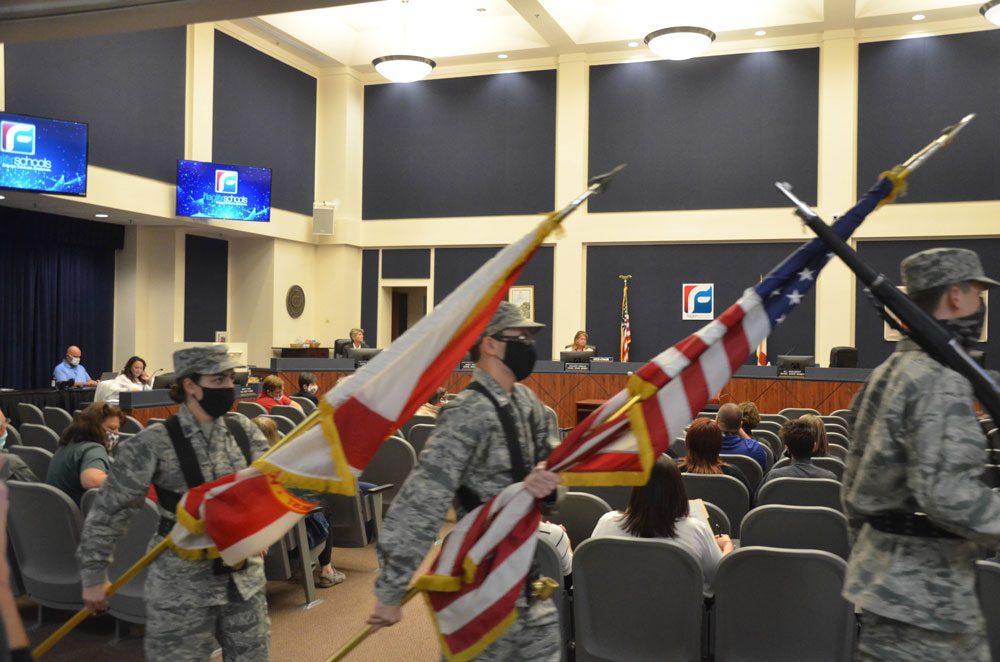Flagler Schools Refuse Free Rapid Covid Tests That Could Minimize Quarantines Even as 9 Private Schools Sign Up
FlaglerLive | July 6, 2021
It seems counter-intuitive: Flagler County schools have declined an offer from the Flagler County Health Department to place free rapid-covid-test kits at the district’s nine school campuses. The rapid tests, part of a federal grant, could have been used to drastically minimize the need for students to be quarantined at home for 10 days at a time when merely suspected of having been exposed to the virus.
In contrast, eight private schools and Imagine at Town Center, the charter school, have accepted the Health Department’s offer.
The breach is occurring barely a month before the start of the 2021-22 school year in the district. School officials are preparing for a full resumption of in-person classes, having scrapped the remote option (except for virtual school). But with vaccinations lagging among the young and the far more transmissible Delta variant of the covid virus emerging–it is making its way north from South Florida–normalcy will not quite be the order of the day on campuses, which are being prepared in many other ways to buffer against the pandemic. Those preparations are themselves an indication that the district is not declaring victory against the virus just yet.
But it’s for those reasons that the Health Department was hoping the rapid test–a very quick, un-intrusive test that yields results in minutes–was among those preparations.
“The whole idea is to promote safe, in-person instruction,” Bob Snyder, the Health Department’s administrator, said. “I’m grateful that several private schools have agreed to allow us to use this other option for avoiding quarantine when it’s not necessary, and I’m sure parents will be very grateful to know that, especially when both parents work.” In all, some 1,700 students and 200 staffers at the private schools will have access to the rapid test when necessary.
That leaves out close to 13,000 public school students and 1,700 staffers. There was audible dismay in Snyder’s voice when he was asked whether the public schools were participating. He would not criticize the district–it’s a vital partner of the department’s in its continuing–and, locally, relatively successful–campaign against the coronavirus. But it was clear that he wished the district was participating.
“The decision to not utilize Flagler Department of Health’s rapid testing option on campus was something we considered but decided against for a few reasons,” David Bossardet, the district’s point man on pandemic strategies, said in an email. ” One was the logistics with how that would work on a school campus (testing locations, isolating close contacts, staffing, transporting students, parent notification, etc.). Another reason is that we have not conducted any Covid-19 testing on our campuses until this point and next year one of our focuses is to try to create as much of a traditional school environment as possible for our students (some of which will be on campus for the first time since March of 2020). While we decided against this option, I continue to value the partnership we have with our local health department and truly appreciate everything they have done to support our schools throughout all of this.”
Last month the Centers for Disease Control awarded the Flagler Health Department a $3.8 million grant to promote safe instruction at school. The grant is part of a $10 billion award from the 2021 American Rescue Plan Act. The local grant has not been publicized until now. The department is required to spend it by July 21, 2021. The Health Department and the schools have come up with a list of priorities that will be put in place with the money.
To Snyder, the rapid test was to have been one of them. The so-called BinaxNOW test is provided by Abbott. It’s a non-invasive nasal swab (meaning that the swab doesn’t have to dig too far in to get the sample: none of those brain-scratching tortures). A student who has been exposed to the virus would have to go to the nurse’s station every other day for 10 days for a test. The wait is up to 15 minutes. As long as the student tests negative, the student can remain in school, continuing interactions with other students as normal, or at least within distancing guidelines. If the student tests positive, the student is sent home for a minimum of 10 days and contact tracing follows its course at school.
The difference comes down to enabling most students who are only suspected of having contracted the virus to stay in school rather than miss 10 days. It also enables parents to continue with their work routines rather than scramble to find someone to stay with the homebound child. Psychologically, it lessens the anxiety of living for 10 days with the uncertainty of having the virus or not.
As an alternative, the health Department is offering to make its facility in Bunnell a rapid testing site for students and staffers, as long as the individual commits to the 10-day, every-other-day testing regimen. Snyder had made the alternative offer to the district but had not heard back.
Bossardet said that’s an option the district is exploring, with reservations. “We are definitely interested in options that would prevent students needing to quarantine following state/federal guidelines (hopefully new guidance will become available prior to next school year),” he wrote. “If DOH’s testing options follows that guidance it is something we would consider. However, at this time we would still prefer to allocate grant funding towards” other projects.
Bossardet and Snyder outlined some of those, which are expected to be in place by the time school resumes–pending approval, since the proposals must comply with the grant requirement.
For example, 2ith $2.7 million, the district would renovate 10 different cafeteria serving lines at schools. The two biggest settings in the school system where students are closest together are in the cafeteria and on the school bus. Renovating and reengineering serving lines to promote more distancing would, Snyder said, be an allowable expense under the grant. The district will also be encouraging outdoor activities. “A good dollar amount is going to be spent on outdoor eating pavilions and shade coverings to promote outdoor activity,” he said.
Bossardet also outlined the following plans:
- Clinic upgrades that would help standardize all clinics and ensure they have the necessary equipment needed to treat students.
- Contracted nurses to help address any shortages and keep up with additional demand.
- Classroom expansion projects/outdoor learning spaces to allow for more social distancing in needed areas.
- Reconfiguring bus routes to allow for more social distancing and reduce the number of students on certain routes.
- Water bottle filling stations that would replace traditional drinking fountains, helping reduce germ transmission.
Snyder is still hoping that all schools will join in the program for rapid testing. “It sure beats missing school, it sure beats missing out and being home,” he said.
But ultimately, it’s the emphasis on vaccination that may diminish the broader risks. The covid vaccine will be made available to all students who want one–voluntarily. “Absolutely. I’ve already brought this up to Cathy and David Bossardet,” Snyder said, referring to Superintendent Cathy Mittelstadt. “When the vaccine is available to those younger than age 12, just like with the flu vaccine, we would like to offer flu again this year like we always do, then offer the covid vaccine to all children upon parental consent, and work with the school district on getting as many as we can vaccinate just like we do with the flu. That is the plan. That is the hope.”
To that end, the partnership between the Health Department and the school district remains essential, even in the face of some disagreements. “They are our Number 1 partners, we can’t do all that we’re doing without them,” Snyder said.






